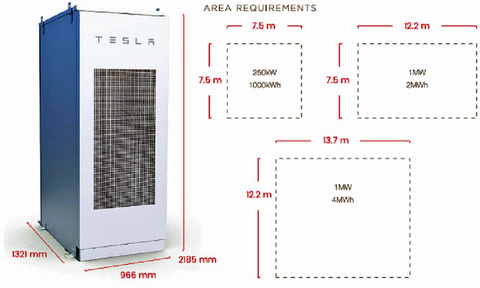Electric vehicles (EVs) have been faced with a power challenge, to wit, having a power source large enough to keep them running longer between charges. And a s the number of devices integrated into said vehicles escalates, so do the challenges of providing adequate power. Tesla answered the call as the company has fabricated the world's largest lithium-ion battery in less than 100 days. However, judging by the size of this battery, you won't be seeing in an EV anytime soon. But the technology will certainly trickle down to the road.
Tesla Beats The Clock
Brought to fruition in under 100 days, Tesla’s huge lithium-ion battery is being called the "Powerpack", and it's being used to power thousands of South Australian homes during periods of blackout. Considered a major breakthrough for lithium, the batteries are serving nearly 30,000 people from one backup source.

This could be good news for the lithium-ion power cell developers and manufacturers, since longer manufacturing times could be one of the drawbacks of the new energy source. Tesla plans to dispel any concerns about being able to deliver product in a timely way.
Fast Manufacturing Ups Demand
Several large manufacturers that could utilize lithium-ion power cells have been reluctant to adopt the technology due to timing and manufacturing concerns. Based on Tesla's ahead-of-schedule delivery, the market for lithium-ion batteries could see expansion over the next several years as timing improvements come in to play.
Lithium is increasing in demand all over the world. The fact that Tesla is building and testing new lithium technology only lends to the future of rechargeable batteries. In fact, there's such a high demand for the metal that supply has been a debatable concern in the future forecast.
Roskill, the industry watcher calculating supply stocks, estimate 785,000 tonnes of lithium carbonate equivalent a year will be needed by 2025. That amounts to a 26,000-tonne shortfall from anticipated supply. Demand this year was 217,000 tonnes compared to 227,000 tonnes of supply. Lithium companies are moving quickly to increase their ability to deliver more pure lithium, but so far the forecast demand is outpacing producers. The solution is going to also require new sources of pure lithium.
Based on the current sources for lithium, analysts suggest we'll need one new lithium mine coming into production every year through 2025. That only accounts for the demand prior to new EV developments this year and any added demand driven by better Li-ion technology.
Idea
Obviously, Tesla has achieved a benchmark in the power sources arena. Judging by the reports and statistics on supply versus demand, one could logically deduce that lithium could easily become the “next oil”, with all the positive and negative events that come with that concept. For more info about Tesla’s soirees into power sources, visit the company’s energy page.